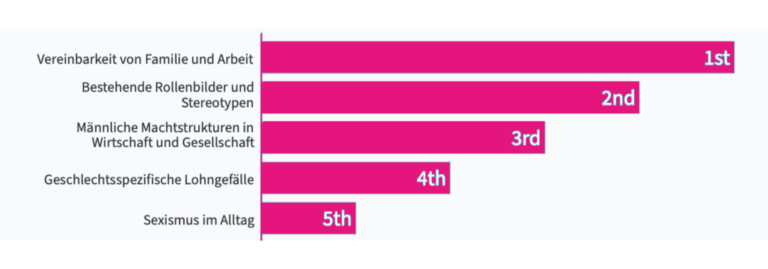


Lesen Sie hier Gedanken der Convoco Denkerinnen und Denker zum Thema:

Gender equality is a topic that countries globally are seeking to protect. But despite these efforts, a McKinsey study concluded that over 2.5 billion women and girls continue to be affected by discriminatory laws and a lack of legal protections. For example, in 36 countries women cannot apply for passports in the same way as men. In 48 countries women cannot obtain a judgment for divorce. In 104 countries women are prevented from working in specific jobs. (C! Forum 2022)

Inequality results in part because women’s freedoms are so limited. There are specific restrictions on their freedom of movement, freedom to earn, even freedom to assemble. These produce economic inequalities, but also other typical inequalities.
Classic economic theory makes us think that women being observably unequal in every country, in every industry, in every occupation in the world, is a result of their own inadequacies and poor choices. This is implausible at best.
All across the world the majority of the population, including men, believe that gender equality is important.


After university, women get paid more or less the same as men. The pay gap appears as soon as the first child is born, when women move toward flexible or part-time working. They get less experience, they get promoted less quickly, the pay gap grows. And women never recover.
In the Nordic countries, the gap is about 30%, in Germany and in the UK it’s 50%. The difference can be explained by how countries deal with childcare. You’ll never close the pay gap unless you provide high quality publicly supported childcare … You have to make it easier for women to stay in the labor market knowing that their children will be well cared for.
Prof. Raji Jayaraman über die Limitierung der Wirtschaftswissenschaften in der Untersuchung des Gender-Pay-Gaps beim Convoco Forum 2022.

Bis in die 80er Jahre hinein waren in den USA ungefähr 40 Prozent der Beschäftigten in Computer Science Frauen. Grund war, dass die Industrie kein hohes Ansehen hatte. Mit Aufkommen von PCs und Laptops wurde Computer Science plötzlich zu einem prestigeträchtigen Studium. Dann haben die Männer die Frauen herausgedrängt.

Algorithmen können Diskriminierung produzieren. Als Amazon versuchte, Teile des Personalauswahlprozesses zu automatisieren, hat der Algorithmus Bewerbungen von Frauen aussortiert, da das System mit Daten der bestehenden Belegschaft gefüttert wurde, welche zum Großteil männlich ist.
Linda Scott: Women tend to be most held back in industries like digital technology and finance. This is justified largely on false assertions that women are not good at math or managing money. No evidence supports these ideas.

Untersuchungen hinsichtlich der mathematischen Befähigung von Männern und Frauen zeigen, dass diese weniger vom Geschlecht abhängt, sondern viel stärker davon, was man dem jeweiligen Menschen zutraut … Unsere Gehirne kalibrieren ihre eigene Leistungsfähigkeit auch danach, was andere von uns erwarten. Hier sind wir individuell wie auch gesellschaftlich gefragt.

Substantive equality is incredibly important … One may say that in order to achieve equal representation [of gender] … we need to treat some people going through a selection process differently to ensure an equal outcome of that process. [Some] people argue treating certain people in a preferential way is unfair. If you focus, however, on the outcome that we’re seeking to achieve, rather than the process itself, then hopefully people can see the merit in having a differential, equitable approach.

Wir haben einen signifikanten Fachkräftemangel in Deutschland und müssen sehr stark darauf setzen, Frauen noch viel mehr im Berufsleben beteiligen.
Minouche Shafik: Around the world, today more women go to university than men. The talents of all those women should be used in the labor market.

If we want to add trillions of dollars to the global economy, we need more women in the workforce. The future is female.
OECD Social Institutions & Gender Index 2019:
“At the current rate of progress, it will take 200 years or 9 generations to achieve SDG 5 [the UN Sustainable Development Goal] on gender equality.”
Sehen Sie hier einen Ausschnitt der Mavie Hörbiger Lesung mit “Texten von Frauen über Frauen” bei der Afterparty des C! Forums 2022 in der Galerie Thaddaeus Ropac.
Melden Sie sich jetzt für den exklusiven Newsletter an. Wir verwenden Ihre persönlichen Daten wie in unserer Datenschutzrichtlinie beschrieben.
© 2024. All Rights Reserved